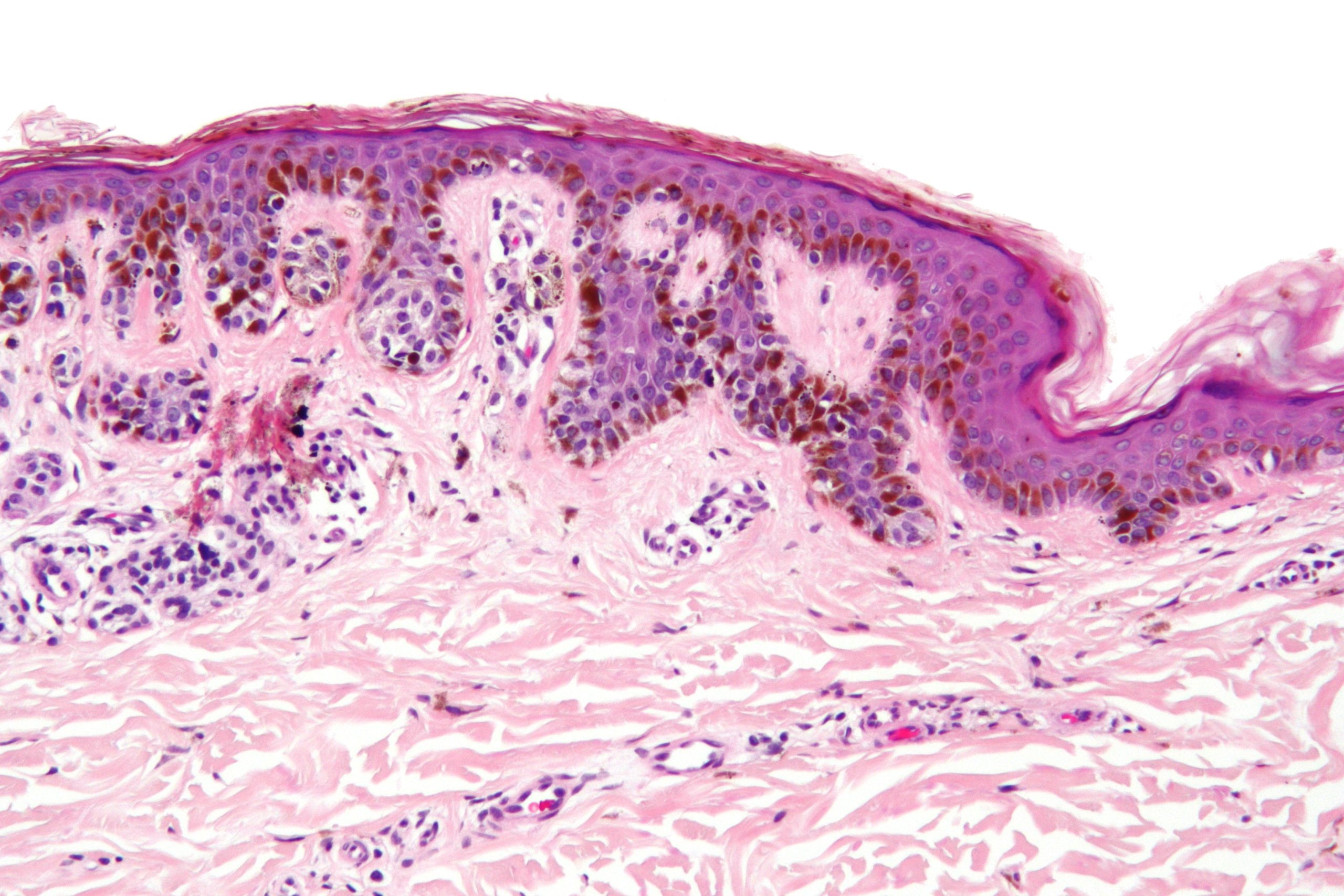
While not an everyday occurrence, it is not at all uncommon for patients to ask me about a “strange mole.” As an aesthetician who works at a dermatologist’s office, I am something of a mole expert. Of all the skin lesions I’ve seen, none are more disconcerting to me than dysplastic nevi. Also known as atypical moles, these alarming lesions are not necessarily cancerous, but it can be difficult to tell the difference.
Appearance
Most of the atypical moles I’ve seen look like melanomas. They have the same asymmetrical shape, the same variation and irregularity of color, and the same hazy border. Unlike most normal moles, they tend to be on the large side, with a diameter that’s often over 6 mm. In fact, the only thing a dysplastic nevus has in common with a normal mole is that it is often found in the same locations on the body—the back, the chest, the abdomen, and extremities.
Risk
As I mentioned, a dysplastic nevus isn’t always cancerous. With that said, it puts a person at a significantly higher risk of the most deadly type of skin cancer—melanoma. I know from my research that about half of melanoma patients also have atypical moles. In fact, the more of these moles a person has, the greater their risk of developing melanoma. It is for this reason that dermatologists often remove these spots from the bodies of at-risk patients.
Advice
The first thing I know a dermatologist will tell patients with dysplastic nevi is not to panic. They do not, however, tell them that they have nothing to worry about. The truth is that these skin lesions have a much greater chance of being cancerous than ordinary moles. Of course, the vast majority of them never become malignant. But, because of the risks, patients should always have them examined if they notice a change in color, size, or shape. That goes double for people who have a family history of melanoma and/or more than 10 dysplastic nevi on their bodies. These folks fall into the extremely high-risk group, and should therefore get regular skin exams from their dermatologists.
For more information on atypical moles, speak to your dermatologist during your next office visit.
